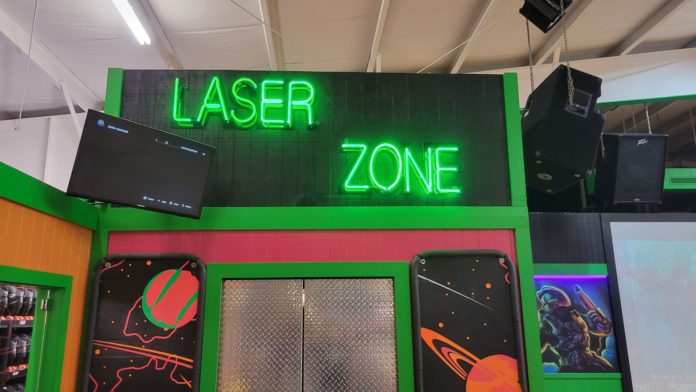What to know about each
Many of today’s new roller rinks offer more than just skating. With additional attractions, they become known as Family Entertainment Centers, or FECs. Both are feasible operations, depending on the number of residents nearby to support the business. There are pros and cons of both, so here’s what to know.
Higher Costs
An FEC can cost a small fortune to build and maintain, with higher utilities, a larger staff, and daily operations. For one, you’re going to need more land and parking spaces. Then you’ll need an architect to figure out the best floor plan, (this is not like building a hotel or hospital) and purchase the equipment and furnishings. Whether you’re adding mini-golf, bowling, climbing towers, laser tag, or bumper cars, there’s going to be higher expenses with an FEC. There’s also going to be a faster and higher cash flow.
Why They Exist
Why are FECs popular with rink operators? When roller skating started to dwindle after the disco era, rink owners were left wondering how to compete with new forms of entertainment. Rather than see customers leave for other venues, they decided to start adding different “attractions” for those with family members who are in tow, but don’t want to skate.
Two Case Studies
Done right, FECs can certainly bring in revenue, but when the focus is off skating and split among different activities, roller skating tends to suffer. Case in point: In Littleton, Colorado, FunPlex, a giant 144,000 square foot mega-entertainment complex was built not far from a giant mall and movie theaters. The behemoth operation offered roller skating, bowling, miniature golf, laser tag, lots of video game machines (it looked like a casino) and a bar. They spent too much money building it, and it changed hands a few times and became known as Fat City and Fun City, but by that point, the roller skating side was DEAD. For one, it had steps to get down to the floor, and one employee to run the place using canned music that ran throughout the building, along with a stage. A women in the marketing department told me “roller skating is dead, there is no need to promote it.”
Because no attention whatsoever was given to roller skating, it was phased out, and replaced with a go-cart track. They also ran Texas Hold ‘em poker night as well. Only a casino could successfully take over, but it’s not legal in that part of Colorado. It was just not sustainable, even with a bar and restaurant. The last owner declared bankruptcy, and the facility was razed to build medical offices.
On the other end of the spectrum is an FEC that did it right, and that’s The Place in Cincinnati, Ohio. Originally The Skatin’ Place, it expanded but never stopped the love for its skating program. It has a full pro shop, wood floor, and a lessons program, along with good food. If you have your heart set on an FEC with roller skating, this is one to emulate.
Too Many Beginners
What’s the problem with FECs besides their enormous outlay to build and maintain? Most of your customers will be new faces and beginner skaters. The goal should be to build skating, so you have a regular clientele with their own gear that get better and sustain fewer injuries. Not that rinks shouldn’t have beginners. But these newbies need to see advanced skaters demonstrate there’s more to skating than stumbling around gripping a skate mate.
Moreover, FECs have to charge higher prices to cover the utility bills and additional labor costs. If they cut their admission tickets to get more customers, then they’d have to scale back elsewhere, like on staff or air conditioning, and that means a mediocre experience and a dwindling customer base.
Also note, parents can get a little freaked out in an FEC when the kids all want to engage in different activities. One wants golf, another laser tag, and then one might skate. Parents want to keep an eye on their kids at all times, and bringing a large family to an FEC can be akin to herding cats at times. So many distractions.
Roller Rink Customers
With a roller rink that focuses strictly on skating, you can have a smaller building, and get by with fewer staffers to help run the place. That means lower utility bills, and a loyal fan base of skaters who want to come back week after week to skate and see their friends. Some of them even want to help you with your duties. Rink employees get to know their customers by name and also get to see them improve and grow up over time. It truly is an extension of family.
FEC Customers
With an FEC, your customer churn is much higher. While parents like to get their kids out of the house and build memories, they don’t go to Disney every day. That’s expensive. Therefore, you don’t get to really know a lot of your customers like you do with a rink. In a small town in Pennsylvania, one rink operator told me he knows the kids in his building by name, week in and week out.
Land Requirements
Roller rinks also require less land to build. I’ve seen one that was situated on two acres, but the layout and placement on the parcel makes it seem like so much more. Plus, it allows for more customer parking spaces and better traffic flow within the 27,000 square foot building that holds 910 people.
Other things to note
FECs have higher insurance premiums because they are covering a multiple of activities. To keep them operational and profit producing, most will include a restaurant and full-service bar. That’s why you see more bowling alleys (Like Uptown Alley) and golf (Top Golf) at your mega-FECs rather than those with a roller-skating surface. The thought of serving alcohol to skaters has received mixed sentiment, although that’s a topic for another day.
Roller Skating’s Downside
As for the downside of having “only roller skating,” you’re going to need a specialized staff who know and want to promote roller skating. It’s possible to achieve, but you are going to have to grow your own, or perhaps import a pro from another state. You can’t just open the door, turn up the music, and expect skaters to know what to do. Teaching skating must be a high priority if you plan on staying in business for decades to come.


